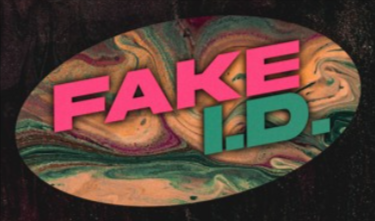Throughout history, the use of deceptive identification templates has been a recurring phenomenon driven by various factors such as political upheaval, espionage, and social stratification. The pursuit of personal gain, evasion of the authorities, and the desire for anonymity have motivated individuals to resort to falsified documents.
Ancient Forgeries and Identity Concealment
The origins of deceptive identification templates can be traced back to ancient civilizations. From forged seals and counterfeit coins to documents used for trade and travel, individuals in antiquity sought anonymity and personal gain through deceptive means. These early forgeries laid the groundwork for the evolution of deceptive identification practices over time.
In medieval times, the need for anonymity in political intrigue and espionage prompted the creation of false identities and fabricated documents. Spies and political agents used forged letters, seals, and passports to conceal their true affiliations and move covertly between territories. These deceptive practices played a crucial role in the turbulent political landscape of the era.

Counterfeits in Times of Revolution and Upheaval
During times of revolution and upheaval, deceptive identification templates served as tools of survival and resistance. Individuals seeking to escape persecution or evade oppressive regimes resorted to counterfeit identification to secure safe passage and establish new identities. For example, during the French Revolution, fake identification documents were used to facilitate escape from the Reign of Terror.
The world wars witnessed the rise of sophisticated espionage and intelligence operations, with forged documents becoming integral to covert activities. Spies and operatives used falsified identification to infiltrate enemy territory, gather intelligence, and maintain cover identities. These practices not only affected the course of the war but also shaped the history of intelligence agencies.
The Roaring Twenties and Prohibition Era
In the United States during the Roaring Twenties and Prohibition era, the prohibition of alcohol led to a surge in the use of deceptive identification templates. Bootleggers and patrons seeking access to speakeasies and alcohol establishments used fake identification documents to bypass restrictions and evade law enforcement.
Modern Challenges and Digital Age
With the advent of modern technology, the creation and distribution of deceptive identification templates have evolved significantly. The digital age has enabled sophisticated counterfeiting techniques, including digital scanning, image manipulation, and replication of security features. The dark web and encrypted channels facilitate the distribution of counterfeit documents, presenting new challenges for law enforcement and border control.
In the digital era, deceptive identification templates have been extensively used in identity theft and financial fraud. Criminals exploit personal information to create counterfeit identification documents for fraudulent activities, leading to financial losses and reputational damage for victims.

Leave a Comment